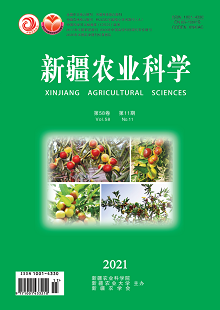【Objective】 This experiment aims to reveal the cu-resistance mechanism of spinach and provide theoretical basis for screening cu-resistant plants by studying the effects of different Cu concentrations on oxidative stress response and mineral element absorption of spinach seedlings. 【Methods】 In this experiment, spinach seedlings were used as experimental materials, and 6 groups of Cu concentrations were set. After 7 days of treatment, the influences of plant biomass, antioxidant enzyme activity, contents of a large number of elements and trace elements were sampled and tested. 【Results】 The results showed that by low concentration of Cu treatment (50 mg/kg Cu concentration), spinach seedling Cu content increased in the body, but did not affect the growth of plant physiological activities, mainly because the plant biomass increased significantly, the leaf of K, Ca, Mg, Fe, Mn, Ni, element content and the root of N, P, K, Ca, Mg, Fe, Mn, Zn, Mo, Ni content all reached the maximum level, the reason for which might be that the plant can be active to raise their antioxidant capacity (SOD, APX activities and proline content increased), membranous peroxide damage decreased to the minimum, avoiding damage to plants caused by Cu2+ accumulation. And high concentration of Cu stress concentration of Cu (1,000 mg/kg), the Cu content of spinach in seedling increased to the maximum, SOD, although CAT activities increased but could not withstand high concentrations of Cu serious harm of membranous peroxide. N, P, K, Ca, Mg, Fe, Mn, Mo and Ni contents of the seedling leaf and P, K, Mg, Fe, Mn, Zn, Mo and Ni of the roots decreased significantly, so the biomass decreased to the minimums, which indicated that high concentration of Cu stress exceeded the ability of plants to resist stress injury and seriously inhibited plant growth and mineral element absorption. 【Conclusion】 In summary, spinach seedlings show strong resistance to Cu, so it can be considered as an alternative plant for cu-contaminated soil remediation.

